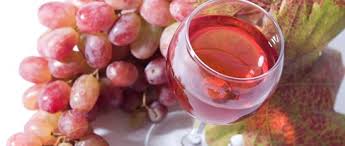“Summer’s almost gone” or so the Doors sang. Well, not quite, there’s still lots of good weather ahead and lots of time to enjoy drinking that quintessential summer quaff, rosé.
Rosés are made in the same manner as white wines, in that they are fermented after the grapes have had a short contact with the skins. They are usually made in one of three different ways. The first is to intentionally make a rosé. Here, red grapes are crushed and the juice is left in contact with the skins for only a short time – 5 to 48 hours. Then it is treated in the same way as a white wine. The second way is very similar, though the intention is different. Red grapes are crushed and then approximately ten percent of the juice is drained off after a short time. The purpose however, is to make better red wines by increasing the skin to juice ratio. The rosé wine is a bonus. The last method, which is not allowed in many places, and seldom produces as good a wine, is to mix white and red wines together.
Because the amount of skin contact varies so much, the colour of rosé wines varies as well, from an almost imperceptible hint of pink, through ‘eye of partridge’, melon, peach, mango, mandarin, salmon, cherry red, red currant, red grapefruit, to almost looking like a very light red wine, though most, and I’d hazard to say the better ones, will lie somewhere between the extremes. Grape variety also plays a role in its colour. Any hint of browning likely indicates an oxidized wine, which has been kept too long or improperly stored – too much light or too high a temperature.
Rosé wines, rarely, if ever, see any contact with oak. They are meant to be light and crisp, fruity (to varying degrees) and refreshing. This means they are wines designed to be drunk early. These are not wines meant for cellar aging. With rare exception (perhaps some examples from Provence), these wines are best consumed before they are two years old.
Rosé wines have gotten a bad rap ever since Bob Trinchero of Sutter Home (California) introduced white Zinfandel to the world in the mid 1970’s. The winemaker decided to make a dry rosé wine, as there was a glut of Zinfandel grapes at the time and not much of a market for red Zinfandel wine. His rosé wine became ‘stuck’ during fermentation, which meant that the sugar in the wine had not all been fermented. Instead of taking steps to restart the ferment, he tasted the wine and decided to bottle it with the residual sugar intact. That wine introduced many people the world of wine and for a decade or more, white Zin was a very popular wine. Unfortunately, far too many people still associate pink wines (rosés) with sweet flabby blush wines such as White Zin or the lackluster cheap sparkling wines of college days – Faisca, Lancers and Mateus of Portugal.
As Rosés have more tannin that white wines they should be served at a slightly warmer temperature, somewhere in the range of 45-55 °F or 7-13 °C. Roséshave a flavor profile resembling that of a red wine. The tastes and smells are often those associated with strawberries, raspberries, or cherries. They have a reputation of matching well with many foods, and that’s accurate. However, there is one category of food with which they pair exquisitely — the contents of a picnic basket. Rosé is the perfect al fresco wine.
There are so many good rosés made in BC and they are made from a wide variety of grapes. Some are made from Syrah or Grenache, others use Pinot Noir or Merlot and there is even one made from Cabernet Sauvignon. Some very good examples of BC rosé wines include those made by: Bartier and Scholefield, Clos du Soleil, Covert Farm, Day Dreamer, Fort Berens, Haywire, La Stellina, Le Vieux Pin, Niche, Quail’s Gate and Spierhead, to name but a few.
As mentioned, rosés are very versatile food wines as there are many different styles, from dry table wines, to social patio sippers to pink bubblies. For the dry table wines, pair them with salmon, ham, pork chops, roasted chicken or turkey. Remember, summer isn’t the only time for rosés. Don’t forget about them at Thanksgiving, Christmas or Easter. They tend to match very well with the holiday foods typically served at these times.
Carpe diem. Open a chilled bottle and enjoy!

